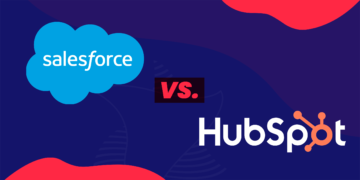Last week, I had the pleasure to attend Dreamforce for the first time and it was a remarkable experience, where I learned a lot but also had tons of fun! As you may be guessing, I attended every session I could on the new Pardot features and that’s what I’ll sum up for you in this article.
My favorite session about Pardot at Dreamforce was obviously the presentation of Pardot Roadmap for 2020, which came with some interesting features I can’t wait to explore in-depth. I also loved the session “Salesforce for B2B Marketing”, which I found particularly interesting given the presented case studies. I will give you some inside information throughout on both those sessions in this article.
New features already available
Although the Winter 20 Release features have been available since October 14, Dreamforce is always the place to review every new feature launched and share ideas about it. So, I’ll be reviewing the Release Notes I found most interesting with you now. Ready? Let’s go!
1. Engagement Metrics
Measuring how engaged our leads are with our marketing assets and initiatives is crucial to understand which leads are the most interesting ones, which assets and initiatives resonate better with each of our audiences, and also discover some new audiences and eliminate under-performing ones.
In this release, Pardot gives us new engagement dashboards for campaigns and accounts. How? Through an Analytics dashboard that you can easily add to your campaign and account records.
In your campaigns, you can analyse the engagement of your campaign members with all of your campaign assets by time.
You can segment by Asset type (form, link, and page) and by Activity Type, to narrow down what you want to see about the asset (submissions, views, and clicks).
This is great to understand which of your campaign assets had the highest engagement and conversion rate, without having to go build a report for it. It is right down in your campaign record!
The cherry on the cake? Dreamforce 2019 revelead us that you now have engagement metrics in your account! By adding the engagement analytics dashboard to your account record you can see which campaigns your Account contacts have been interacting with and get insights on their engagement over time. Just forget about opening each of your Account contacts to understand which one has been more active lately! You can now see it all directly in this dashboard and even understand which activities they did.
2. Increase in marketing productivity
Being productive is essential, especially these days in which marketers carry huge workloads given the enormous amount of existing data. So, to help us become even more productive, Pardot did some major improvements in itself. I’ll focus on the ones I heard about in Dreamforce and which I found more interesting:
- HML: I’ve already talked about this development in my last article, but for those of you who don’t know it yet, Pardot now uses Handlebars Merge Tags to personalize email, just like Salesforce does. So, it’s now easier to include merge tags in your emails, thus personalizing communications. And… these email templates will also work in Salesforce now!
- Automate Prospect Resubscribe: Pardot proactively captures lost and opted-out prospects, and opt them back in, when they interact with your brand.
- Snippets: I really like this one feature! A snippet is a reusable block or bit of text, link, image, or date that you can insert in your emails. Having snippets will allow you to make key changes once and cascade them to your marketing content.
For instance: imagine you have a link to a subscription page that is present across your campaign. You can now create a snippet with the link and add the snippet to all your campaign emails. Then, if you need to change that link someday, instead of going to all emails to change it, you can just change the snippet.
3. Deeper Prospect Insights
If you want to go deeper on your prospect’s data, this one is for you! You can finally combine visitor and activity data and then filter it by job title (for example), or really any default or custom Pardot field to have a better understanding of your marketing data, all within B2B Marketing Analytics.
4. Einstein Behavior Scoring
Einstein behavior scoring identifies prospects that seem to be ready to buy, based on their behavior. It uses its own engagement model and engagement decay to score prospects. Yet, now it will not only take into consideration engagement decay, but it will also use a machine learning model to continuously learn from your prospect activity and buying cycles. This way, it will be able to design unique scoring models for your organization which then automatically adjust as new patterns surface. It will also provide you with insightful key factors, showing score explanations for marketing asset engagement and across prospects from the same company. And last but not least, Behavior score fields are now available in any standard Lead or Contact report.
Source: Salesforce release notes
5. Enhancements in Engagement Studio
I’ve also talked about this one in my last article on Pardot August Release Notes, but it’s so good that I’m going to mention it again! Engagement studio now allows you to make complex rules! Yes, you don’t need to create a step per rule anymore, you can simply create one step of the program with all your rules.
This is not only an excellent time-saver, but it also allows you to both make more complex workflows with less building effort, and to have a cohesive engagement reporting along with the steps, giving you more contextual insights.
6. Business units with multiple tracker domains
For those of you using business units to separate businesses or brands, I bet it was difficult to ensure consistency and track activities with only one tracker domain… But finally some good news for you! Now you can have multiple tracker domains that help you keep brand consistency with different tracker domains per business or brand.
Some new features in Roadmap for 2020
Along with the now available new features, at Dreamforce we also talked about the Roadmap for Pardot. So, I’ll give you some information on what you can expect. Just keep in mind that this part of the article is future-oriented, so don’t make purchase decisions based on it. Later on, when and if available, I’ll give you all the updates on this.
Lightning Email Builder:
In my opinion, this feature is the most exciting one! I believe most of Pardot users out there will agree with me, as we have been expecting this for so long! It will have the look and feel of building a Lightning Record Page, providing consistent building experience across platforms, responsible HTML design, and extensible content with drag and drop email design. I’m really excited about this Lightning Email Builder, so as soon as I have access to the pilot, I’ll give you more information on it.
Einstein Analytics for B2B Marketing:
Einstein Analytics is now connected to other datasets (not just Pardot), allowing you to combine sales, marketing, service and third-party data datasets, such as LinkedIn, Facebook, and even Google Advertising data. It also brings the power of Einstein discovery and Einstein insights into your marketing data, to help you uncover patterns and trends. Let’s wait for the pilot to be available and I’ll give you more insights on this, as well.
Einstein Behavior Scores Dashboard:
This dashboard will help you to easily identify which engagement patterns are driving conversions! How? Through a dashboard that shows you influence by asset and behavior score influenced by activity, for example. It will also be possible to use Behavior score as a field to trigger Pardot automatons and engagement studio steps.
Account-based campaigns:
For those of you who have an ABM strategy, this feature can have a huge impact, as the idea is to make it possible to have accounts as campaign members and to do account-based segmentation and list building. As I said, it’s just an idea in the roadmap, but all B2B marketers, and especially those doing ABM, can expect this to come true as soon as possible!
HML and Snippets in Landing Pages and Forms:
Now you can only use snippets and HML in emails, but the goal is to make it available also for landing pages and forms during 2020, which would be really useful!
Lots of interesting features coming, right? Just remember it is not yet available, it’s just in the Roadmap. I’ll keep you updated about it, so expect new posts as long as these features are being released.
More info, please!
Now, as it can be a lot of information to absorb in only one article, and I bet you would like to see some of these enhancements in action, right? So, I will leave you with the link for the recording of the session “Salesforce for B2B Marketing” at Dreamforce that I found really interesting as a wrap up of all these I’ve talked about.
I hope you found this article interesting! Subscribe to our blog to know more about Dreamforce, Pardot, and, of course, other Salesforce products! In case you have any doubt or question, feel free to drop us a comment. 🙂







Comments 1